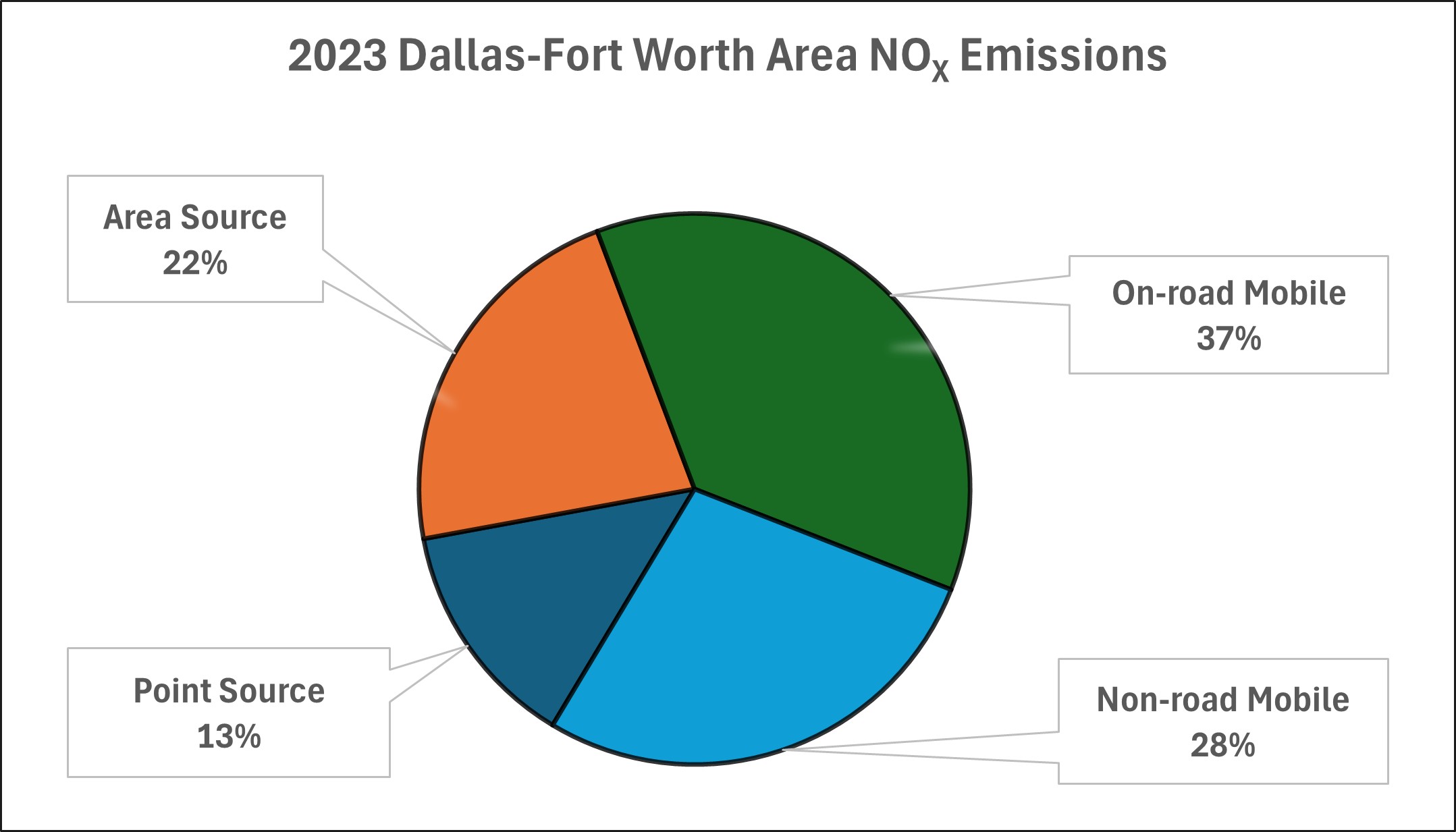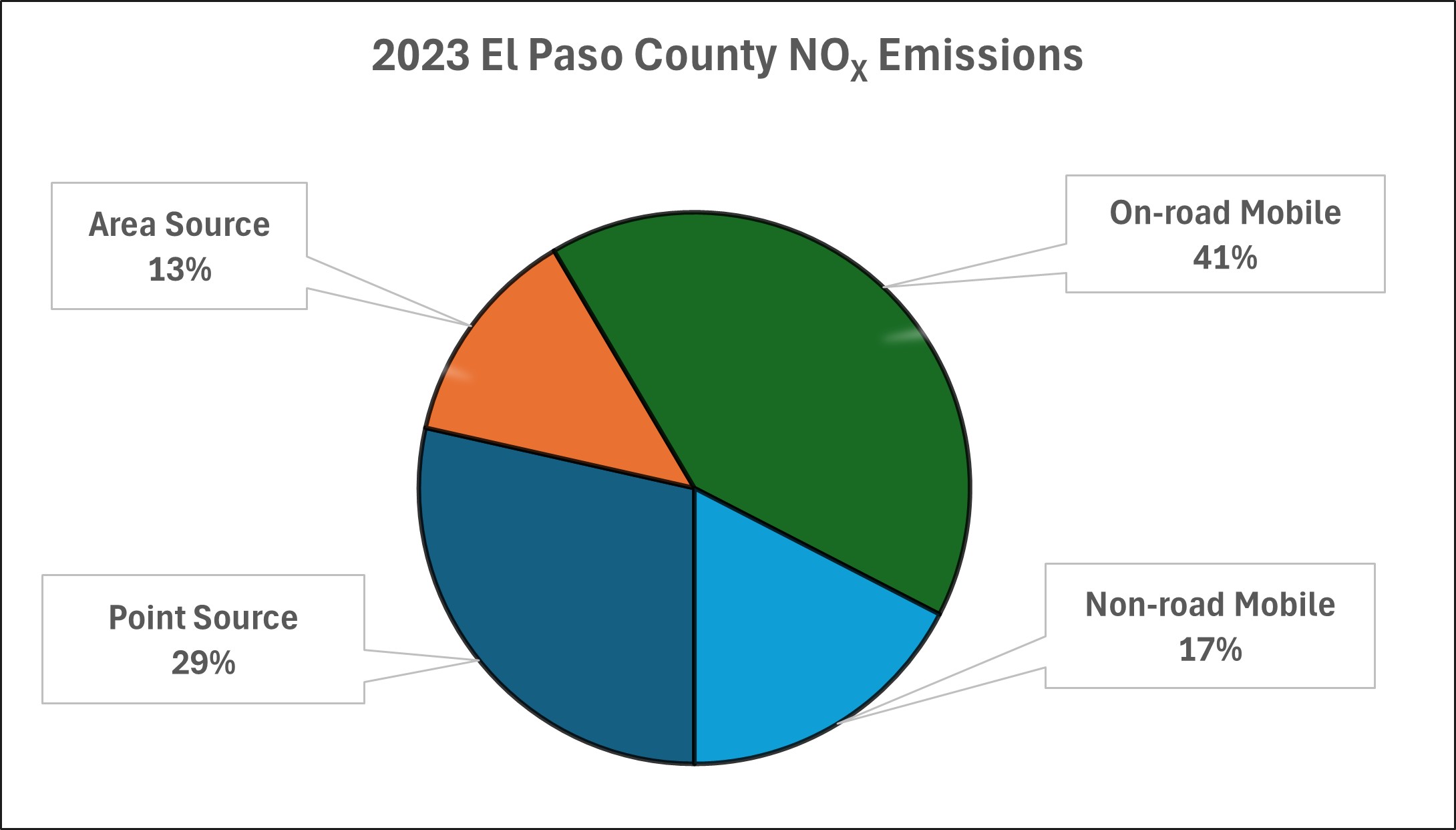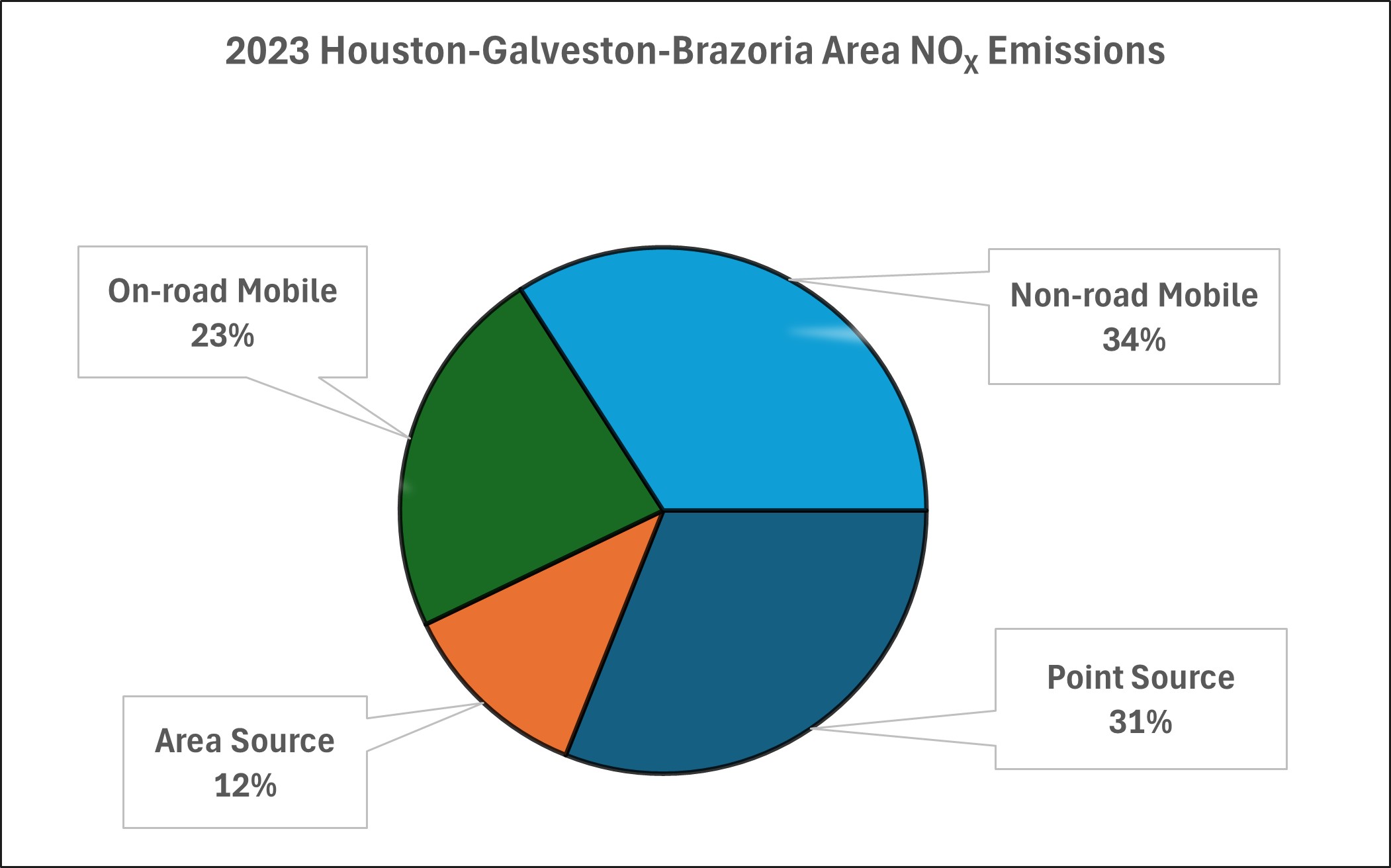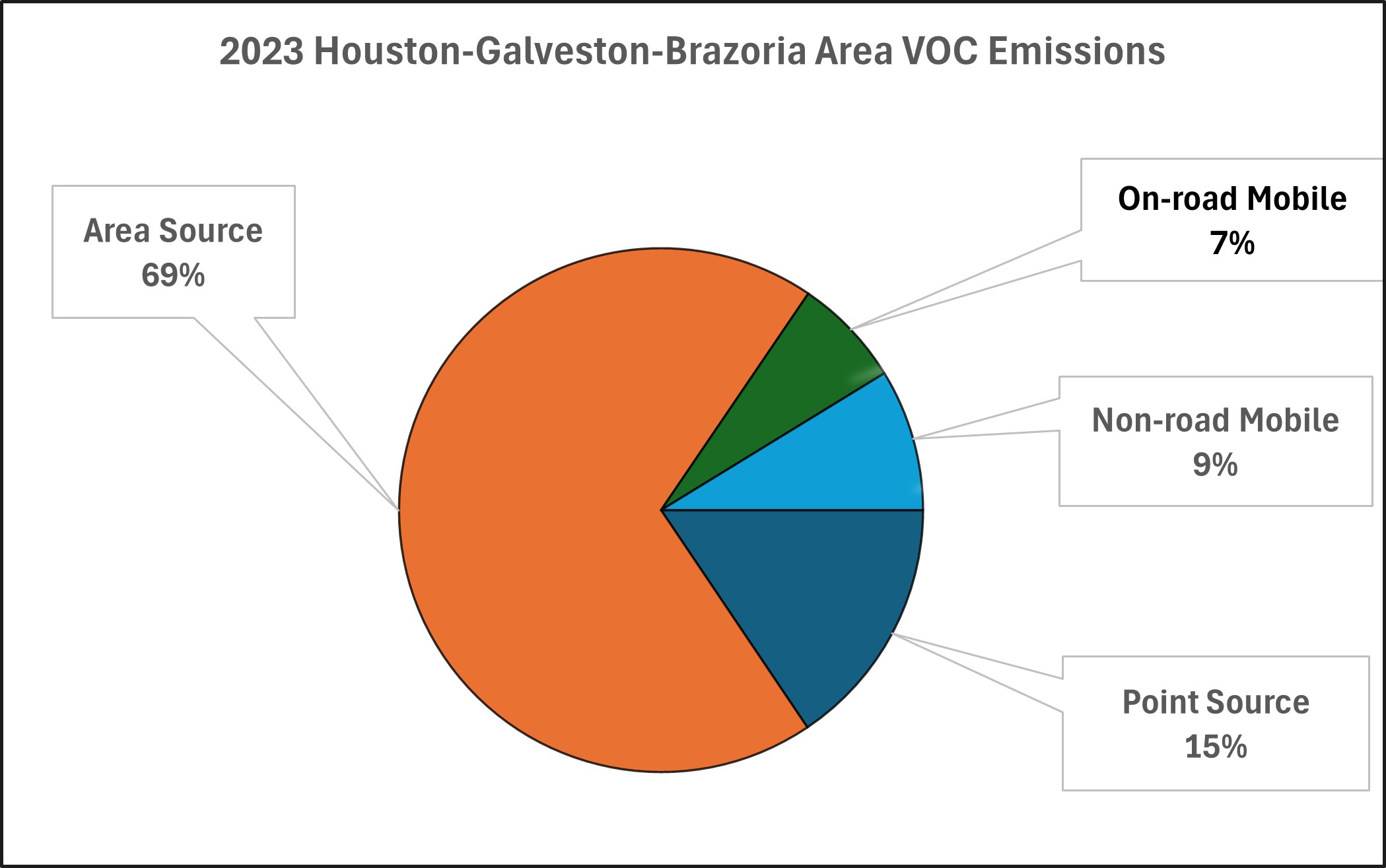Texas Emission Sources - A Graphical Representation
The following pie charts show the relative emissions of nitrogen oxides (NOx) and volatile organic compounds (VOCs) for Texas urban areas by source category. The charts are developed every three years based on the National Emissions Inventory.
2023 Emission Source Categories:
- Point Sources: Typically large, industrial, stationary sources, such as refineries, chemical plants, and power plants. Point sources meet the reporting requirements of 30 Texas Administrative Code §101.10 and submit annual emission inventories to the TCEQ.
- Area Sources: Generally small, stationary, industrial, commercial, and residential sources, such as gas stations or home heating. Area source emissions may come from materials or activities at a site. These sites are stationary emissions sources that do not meet the reporting requirements for point sources. The TCEQ estimates Texas area source emissions every three years for the National Emissions Inventory .
- Mobile Sources: Include on-road sources such as cars, trucks, motorcycles, and other vehicles certified for highway use. They also include non-road sources that typically do not operate on highways, such as planes, trains, drilling rigs, commercial boats, and equipment used for agriculture, industry, construction, mining, and commercial lawn maintenance. The TCEQ estimates Texas mobile source emissions every three years for the National Emissions Inventory and has programs to help reduce mobile source emissions.










